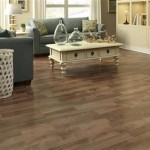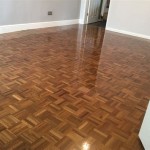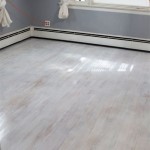Vinyl flooring is one of the most popular flooring materials on the market today. It is durable, easy to maintain, and affordable. But, did you know that all vinyl flooring contains Volatile Organic Compounds (VOCs)? VOCs are chemicals that can have adverse effects on your health, so it is important to understand what they are, where they come from, and how to minimize your exposure to them.
What Are VOCs?
VOCs are gases released from certain solids and liquids. They can come from a variety of sources, including paints, furniture, cleaning products, and vinyl flooring. VOCs can come in both organic and inorganic forms. Organic VOCs are made up of carbon and hydrogen, while inorganic VOCs are made up of nitrogen, sulfur, and chlorine. VOCs can cause a variety of health issues, including eye, nose, and throat irritation, headaches, nausea, and even cancer.
Where Do Vinyl Flooring VOCs Come From?
Vinyl flooring VOCs come from the manufacturing process and from the adhesives used to attach the flooring to the subfloor. Vinyl flooring can contain a variety of VOCs, including benzene, ethylbenzene, formaldehyde, toluene, xylene, and styrene. The levels of VOCs can vary depending on the type of flooring, the age of the flooring, and the installation process.
How Can You Reduce Your Exposure to Vinyl Flooring VOCs?
There are a few steps you can take to reduce your exposure to vinyl flooring VOCs. First, make sure that the flooring is installed properly. If there are any gaps in the seams or any areas where the adhesive isn’t properly applied, it can increase the amount of VOCs released into your home. Second, choose flooring with low VOC content. Many manufacturers now offer vinyl flooring with low or no VOC content. Finally, ventilate your home after installation to help reduce the amount of VOCs in the air.
What Are the Benefits of Low-VOC Vinyl Flooring?
Low-VOC vinyl flooring is a great choice for anyone looking for a durable and affordable flooring option. It is much easier to install and maintain than other flooring types. It also has a lower environmental impact than other materials. Low-VOC vinyl flooring is also safer for your family, as it emits fewer harmful chemicals into the air.
What to Look for When Buying Low-VOC Vinyl Flooring
When shopping for low-VOC vinyl flooring, look for products labeled with the Greenguard Gold certification. This certification is a third-party verification that the product meets the strictest standards for low-VOC emissions. You should also look for flooring with a thick wear layer, as this will help the flooring last longer. Finally, look for flooring with a high-quality adhesive to ensure that the flooring is properly installed.
Conclusion
Vinyl flooring is an affordable and durable flooring option, but it can contain VOCs that can have negative health effects. It is important to understand what VOCs are, where they come from, and how to minimize your exposure to them. Low-VOC vinyl flooring is a great choice for anyone looking for an environmentally-friendly and safe flooring option. Look for products labeled with the Greenguard Gold certification, a thick wear layer, and a high-quality adhesive to ensure that your flooring is properly installed and safe.















Related Posts








